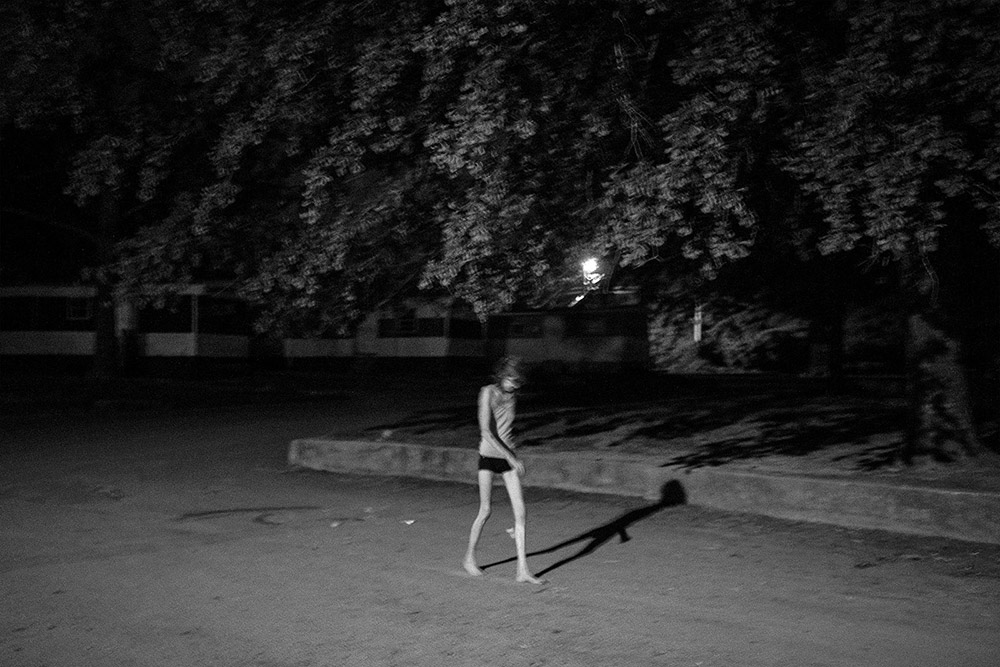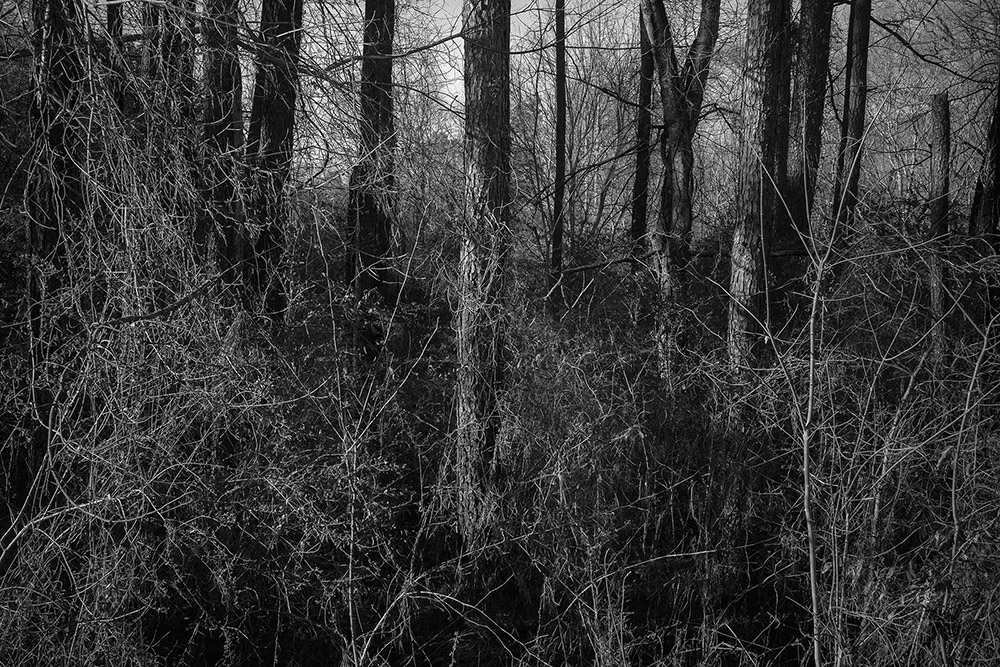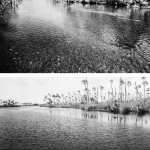PhotoNOLA Prize: 3rd Place: Jared Ragland: Good Bad People

©Jared Ragland, from the series GOOD BAD PEOPLE: Methamphetamine Use on Sand Mountain, Marshall County, Alabama Michael, 8. The first time Michael’s mother, Misty, used meth she went on a five-day binge. After passing out from exhaustion, she woke up to find her oldest son drowning in the bathtub. The boy was resuscitated, but soon after he and his brother and sister were taken from Misty’s care. Michael is the only child who remained in Misty’s custody.
Jared Ragland’s project GOOD BAD PEOPLE, a series that tells the story of Methamphetamine use on Sand Mountain, Marshall County, Alabama, received Third Place in the 2017 PhotoNOLA Review Prize (sign-ups open tomorrow!). Jared has a legacy with the PhotoNOLA festival. When I attended the event in 2015, Jared along with Eliot Dudik, created the book Bras-Coupe, in one weekend–it was shot, printed, bound, and sold over the 3 day festival–needless to say those who witnessed the effort were blown away.
GOOD BAD PEOPLE is an unflinching look at a population that is unseen and marginalized. This work has received significant recognition and can be currently seen in exhibition, The Southern Disposition, at Indie Grits Labs in Columbia, S.C. running through September 27, 2018.
Work from a concurrent project, Where You Come From is Gone, is currently featured in the B18: Wiregrass Biennial at the Wiregrass Museum in Dothan, AL. Upcoming exhibitions include: In Memory of Place, Walnut Gallery, Gadsden, AL (curated by Jenny Fine) Sept. 7-Oct. 31; SPESC Juried Educator Exhibition, Firehouse Gallery, Baton Rouge, LA (juried by Russell Lord, New Orleans Museum of Art) Oct. 4-Nov. 1; Where You Come From is Gone at the Georgine Clarke Alabama Artists Gallery, Montgomery, AL, Oct 15-Jan 5; and a faculty exhibition at the University of Alabama at Birmingham’s Abroms-Engel Institute for the Visual Arts, Nov. 5 – Dec. 1.

©Jared Ragland, from the series GOOD BAD PEOPLE: Methamphetamine Use on Sand Mountain, Marshall County, Alabama

©Jared Ragland, from the series GOOD BAD PEOPLE: Methamphetamine Use on Sand Mountain, Marshall County, Alabama Chico, 48, wears a Dia de los Muertos mask and sits in his living room under a swastika, Confederate flag, and a copy of the US Constitution. Chico has used meth nearly every day since the late nineties, refuses to receive treatment for Hepatitis C, and uses his disability checks to fund his habit. A self-proclaimed member of the Aryan Brotherhood, Chico (who is of Mexican heritage) often paints large swastikas, anarchy symbols, and threatening words on his trailer to project a menacing persona.
Jared Ragland is a fine art and documentary photographer and former White House photo editor. He is at work on a long-term documentary on methamphetamine use in rural northeast Alabama and currently teaches and coordinates exhibitions and community programs in the Department of Art and Art History at the University of Alabama at Birmingham.
Jared is the photo editor of National Geographic Books’ The President’s Photographer: Fifty Years Inside the Oval Office and has worked on assignment for NGOs in the Balkans, the former Soviet Bloc, East Africa and Haiti. In 2015, Jared was named one of TIME Magazine’s “Instagram Photographers to Follow in All 50 States.” He is the recipient of a 2017 Alabama State Council on the Arts fellowship and was awarded third place at the 2017 PhotoNOLA Review Prize for his project, Good Bad People.
His work has been exhibited internationally, with recent shows at Umbrella Arts in New York, New Orleans’ The Front, Candela Books + Gallery in Richmond, Va., the In/Out Transylvania Foto Festival in Cluj, Romania, The National Geographic Society, Birmingham Museum of Art SHIFT space, Huntsville Museum of Art, Montgomery Museum of Fine Arts, Mobile Museum of Art, Wiregrass Museum of Art, Rayko Photo, the Los Angeles Center of Photography, Click! Photography Festival, and Filter Photo. Jared’s work can be found in collections at the Archive of Documentary Arts at Duke University, the Beinecke Rare Book & Manuscript Library at Yale University, Birmingham Museum of Art, Chrysler Museum of Art, Contemporary Art Center New Orleans, and the Phoenix Art Museum, and his photographs have been featured by Forbes, The Oxford American, and The New York Times.
Jared is an alumnus of LaGrange College and a graduate of Tulane University with an MFA in Photography. He resides in his hometown of Birmingham, Alabama.

©Jared Ragland, from the series GOOD BAD PEOPLE: Methamphetamine Use on Sand Mountain, Marshall County, Alabama Alice, 21. Alice first started smoking meth with her ex-boyfriend, Ryan. The two committed a string of robberies and after Ryan was arrested, Alice moved in with Chico and began using with needles. Alice claims that Chico held her against her will and injected her with meth while she slept. Shortly after this picture was made, police raided Chico’s home and took Alice to her grandmother’s house.
Good Bad People
In April 1862 – just a year into the American Civil War – The New York Times reported on a dispatch from Union troops titled, “Advance into Alabama.” It read:
An hour before sundown we reached another barren region inhabited by poor white trash. Their houses were of the worst imaginable description, and how they managed to obtain a living upon such as soil, was a problem to us. Yet hither the pitiless monopoly of the slaveholding class had driven them, and, by some means were other, they managed to wring sufficient food to keep themselves and their children from starving, out of these inhospitable rocks.[i]
Impressions of Alabama have changed little in 150 years, particularly as the roots of deep poverty have perpetuated class division and precipitated widespread drug addiction. The rise in use of methamphetamine over the last decade has led to increased cultural anxiety about the drug and those who use it while the general perception of the meth-head is perpetuated by popular television programs and pervasive anti-meth campaigns. These limited representations typically paint one-dimensional, demonized characters whose chronic drug use is epitomized by obsessiveness, paranoia, and monstrous physical side effects. But while there are certainly deleterious consequences to meth use and stereotypes often ring too true, existing cultural narratives too often fall short of individually considered realities.

©Jared Ragland, from the series GOOD BAD PEOPLE: Methamphetamine Use on Sand Mountain, Marshall County, Alabama
Photographed in collaboration with University of Alabama at Birmingham sociologist Heith Copes, Ph.D., GOOD BAD PEOPLE tells the complex, often contradictory stories of more than two dozen people who use methamphetamine from Sand Mountain, a sandstone plateau in northeast Alabama infamous for extreme poverty, poultry processing plants, Pentecostal snake-handlers, and meth production. Through the combination of first person accounts, ethnographic interview texts, research analysis, and documentary photographs, Good Bad People seeks to engage with the current conversation concerned with the pivotal political role and cultural identity of the rural American South and reveal how people who use meth create and communicate a sense of identity as they navigate social and economic marginalization.

©Jared Ragland, from the series GOOD BAD PEOPLE: Methamphetamine Use on Sand Mountain, Marshall County, Alabama “Mama” suffers from chronic health problems and self-medicates with meth and synthetic marijuana. She looks after people in her trailer park and can often be found comforting and cooking for her neighbors.
Southern Gothic literature has described the South as a deeply flawed place, where the lives of eccentric characters are shaped by poverty, alienation, crime, and violence as they struggle through morally questionable actions to make sense of the world around them. The broken, often sinister, characters in stories by Flannery O’Connor, Carson McCullers, and Harry Crews embody madness, despair, and decay to reflect social realities and critique conventional cultural understandings. Similarly, Good Bad People tells the stories of Chico, an ex-convict, meth dealer, and self-proclaimed member of the Aryan Brotherhood; Ryan and Alice, a young runaway couple on the brink of a lifetime of addiction; Willow, a transient, chronic binge user; and Fred, a long-time user who lost everything he owned in a house fire.
[i] “Gen. Mitchell’s March Into Alabama”. The New York Times. April 14, 1862.

©Jared Ragland, from the series GOOD BAD PEOPLE: Methamphetamine Use on Sand Mountain, Marshall County, Alabama Legal, 22. Mama’s son, Legal, is a petty drug dealer and easy target for the local police; he is arrested regularly and often exchanges information for early release. Legal justifies his dealing by never physically handing drugs to anyone; instead, he places the drugs on a table for his buyer to pick up on their ow

©Jared Ragland, from the series GOOD BAD PEOPLE: Methamphetamine Use on Sand Mountain, Marshall County, Alabama Interior of a Sand Mountain trailer, home to meth users. Similar illustrations of a demon-like figure with a large, round torso and long, spindly appendages can be seen inside a number of meth users’ homes across Sand Mountain.

©Jared Ragland, from the series GOOD BAD PEOPLE: Methamphetamine Use on Sand Mountain, Marshall County, Alabama Fred, 53. Fred lived in a house he inherited from his mother, sharing the spare bedrooms with fellow meth users. The house burned down after a housemate got high and set a fire in the living room. Because he had nowhere else to go, he remained in the soot-filled charred remains with three other users for months. “I gave him food and clothes and a place to sleep,” said Fred, “and he took the only thing my parents left me. I don’t know what to do.”

©Jared Ragland, from the series GOOD BAD PEOPLE: Methamphetamine Use on Sand Mountain, Marshall County, Alabama j Personal affects remain inside Fred’s place, a condemned house that had burned down but remained home to a handful of meth users.

©Jared Ragland, from the series GOOD BAD PEOPLE: Methamphetamine Use on Sand Mountain, Marshall County, Alabama j

©Jared Ragland, from the series GOOD BAD PEOPLE: Methamphetamine Use on Sand Mountain, Marshall County, Alabama j Willow, 37. Willow tries to inject but struggles to find a vein, sticking herself half a dozen times before blaming me for making her nervous with the camera. Willow has lived in more than six homes in less than nine months. She is a chronic binge user who was first introduced to meth by her ex-girlfriend, Chelsea.

©Jared Ragland, from the series GOOD BAD PEOPLE: Methamphetamine Use on Sand Mountain, Marshall County, Alabama Chelsea, 48. A preacher’s daughter and college graduate, Chelsea struggles to justify her meth use and sexuality with her conservative, Pentecostal upbringing. She currently lives in a small tool shed where she and her friends used to meet to get high.

©Jared Ragland, from the series GOOD BAD PEOPLE: Methamphetamine Use on Sand Mountain, Marshall County, Alabama j Ryan, 22. Upon his release from jail Ryan walked more than 20 miles from the sheriff’s office to his parent’s house. While in jail he found Jesus, became a born again Christian and swore off meth, but he was turned away by his father when he arrived back home. After reuniting with his ex-girlfriend, Alice, he moved into a trailer with her and began using again, this time with needles.

©Jared Ragland, from the series GOOD BAD PEOPLE: Methamphetamine Use on Sand Mountain, Marshall County, Alabama Mono, a former member of MS-13, arranges clothes for a garage sale. Together with a friend, the two sold just enough to buy a quarter gram of meth, hardly enough to split and both get high. “Meth makes me forget about my problems, it makes me not think about them. Look, I might use and all that, but… I’m one of the good bad people. I’m a good, bad person. That’s what I tell everybody.”
Posts on Lenscratch may not be reproduced without the permission of the Lenscratch staff and the photographer.
Recommended
-
Yorgos Efthymiadis: The James and Audrey Foster Prize 2025 WinnerJanuary 2nd, 2026
-
Arnold Newman Prize: C. Rose Smith: Scenes of Self: Redressing PatriarchyNovember 24th, 2025
-
Celebrating 20 Years of Critical Mass: Cathy Cone (2023) and Takeisha Jefferson (2024)October 1st, 2025
-
Celebrating 20 Years of Critical Mass: George Nobechi (2021) and Ingrid Weyland (2022)September 30th, 2025
-
Celebrating 20 Years of Critical Mass: Amy Friend (2019) and Andrew Feiler (2020)September 29th, 2025






















































